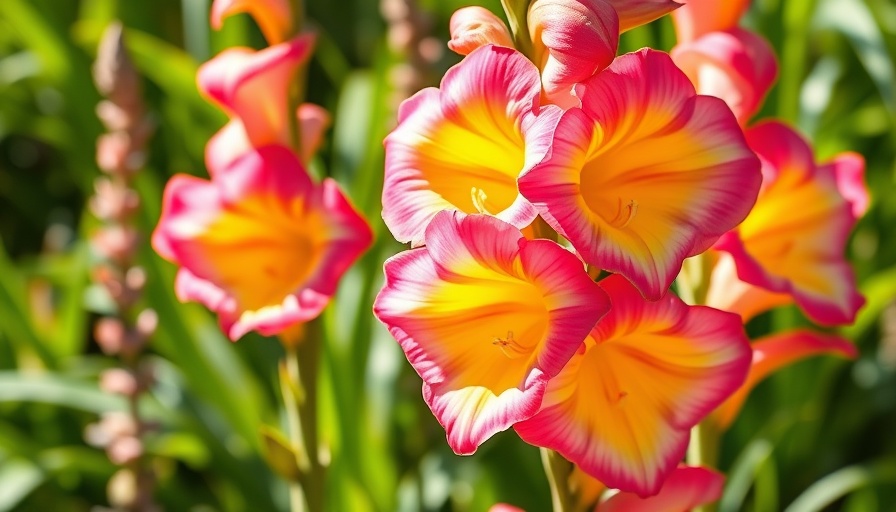
Why Choose Gladiolus for Container Gardening?
Gladiolus, often referred to as the 'sword lily', are stunning additions to any garden, especially when cultivated in containers. Their tall, striking spikes adorned with vibrant blooms create a beautiful focal point on patios, balconies, or front porches. Choosing to grow gladiolus in pots not only enhances your garden décor but also allows for greater control over growing conditions such as soil quality and sunlight exposure.
Understanding the Basics of Gladiolus Growth
To get started, it’s essential to understand the basic needs of these captivating plants. Gladiolus thrive in rich, well-draining soil and require full sun for optimal growth. They prefer temperatures between 60°F and 70°F (15°C to 21°C). As perennials native to warmer climates like Africa and the Mediterranean, they flourish in USDA Zones 7 to 10, with certain varieties adapted to cooler areas down to Zone 5.
Choosing the Right Cultivars for Your Space
The world of gladiolus is diverse, with several cultivars available for home gardeners. The most popular types include:
- Grandiflora hybrids: Renowned for their large blooms, reaching up to 6 inches wide.
- Nanus hybrids: Diminutive yet delightful, ideal for small spaces.
- Primulinus hybrids: Unique features with contrasting throat blotches increase visual interest.
When selecting, consider the height and bloom size that will best suit your container and outdoor space.
Perfect Potting: Container Selection and Soil
Your choice of container plays a crucial role in the health of your gladiolus. A pot that is at least 12 inches deep helps accommodate the sizable root system of the plant while ensuring adequate drainage. Consider materials like terracotta, which allows the soil to breathe, reducing the risk of root rot.
For the soil mix, a loamy, sandy blend that retains moisture yet drains well is ideal. A mixture rich in organic compost provides nutrients that promote healthy growth and flowering.
Potting Up: How to Get Started
Begin by planting gladiolus corms around 4-6 inches deep, with the pointed end facing upward. Space the corms at least six inches apart to allow for proper air circulation as they grow. Water gently, and keep the soil moist but not soggy, allowing the corms to settle comfortably in their new environment.
Maintenance and Ongoing Care
Once planted, maintaining your gladiolus involves regular watering and monitoring for pests, which can deter growth. Consider using natural pest-resistant plants nearby as companions. Fertilizing every four to six weeks with a balanced fertilizer will encourage bountiful blooms from early summer to fall. Furthermore, it's beneficial to deadhead spent flowers to promote further flowering.
Extending the Season: Planting Every Two Weeks
For an extended flowering season, consider planting a new batch of corms every two weeks. This staggered planting will ensure that you have continuous blooms, enhancing the visual appeal of your garden all summer long.
Common Misconceptions and Tips for Success
Many believe that container gardening is only suitable for small plants, but gladiolus showcase that even tall, vibrant blooms can thrive in pots! Additionally, a common mistake is overcrowding corms in a single pot. Ensure each plant has room to grow for optimum health and beauty.
Conclusion: Embrace the Beauty of Gladiolus
Growing gladiolus in containers is not just a gardening activity; it's a pathway to beautifying your environment, providing a source of pride and joy throughout the growing season. So why not put down roots today with these dazzling flowers? Explore the world of gladiolus, embrace the challenge, and reap the rewards of your efforts while creating a stunning display that elevates your outdoor spaces!
 Add Row
Add Row  Add
Add 




 Add Row
Add Row  Add
Add 

Write A Comment